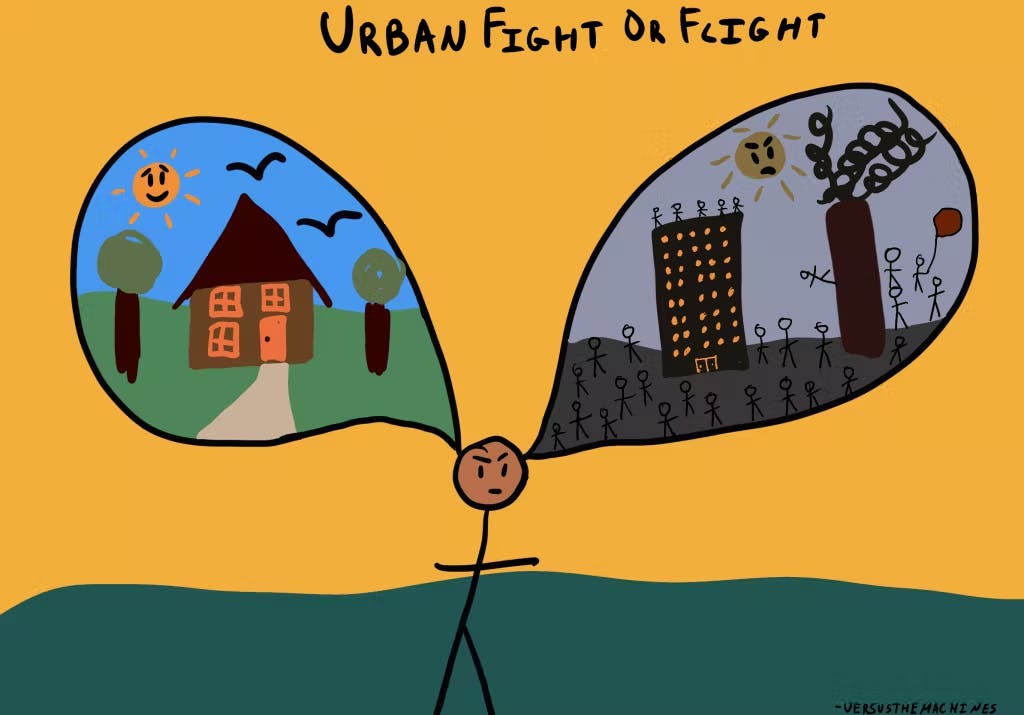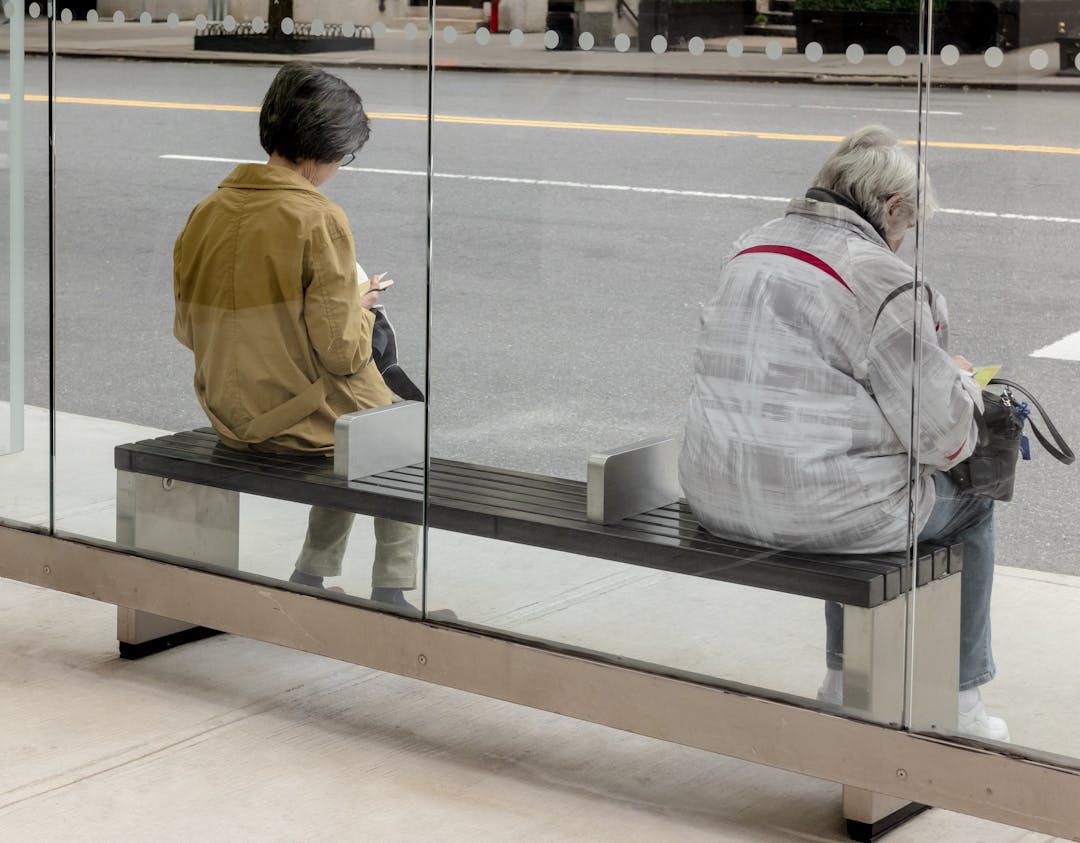TDL Brief: People Want to Be Outside Cities

People are leaving cities for the suburbs at an increasingly rapid rate. In America, USPS data shows that the rates of people moving spiked during the first several months of the pandemic. Big cities experienced the largest net losses, with New York City, Chicago, and San Fransisco being the biggest losers.
The reasons behind this accelerated shift from the urban to the suburban are two-fold. First, the pandemic has caused residents of many cities—especially densely populated ones like New York City and San Francisco—to seek out more space. Most often, that means (at least temporarily) leaving the city.
Second, the pandemic accelerated a shift toward working from home, leaving city-dwellers to question whether living in a city is still worth it. Prior to the work-from-home revolution, the economic and social mobility benefits that cities offered outweighed costs such as overburdened infrastructure, long commutes, and excessive noise.
Now that many residents can get those same benefits while living outside of cities, however, cities are facing a fiscal crisis as the tax base moves away. Before the pandemic, Phoenix, Arizona was projecting a $28 million surplus for the upcoming fiscal year. Now, it’s anticipating a $26 million deficit. New York City is projecting a deficit of at least $6 billion. San Francisco was running a $420 million deficit before the pandemic—now, the city is expected to run a deficit north of $1.5 billion.
So how can cities keep their residents, or win them back? Behavioral science offers some low-cost, high impact solutions.
Tom Spiegler, TDL Managing Director
How can we help?
TDL is a socially conscious consulting firm. Our mission is to translate insights from behavioral research into practical, scalable solutions—ones that create better outcomes for everyone.
1. Re-thinking public transit.
By: Mass Transit Mag, What Will Transit and Mobility Look Like After the COVID-19 Crisis? (April 2020)
Public transport ridership has dropped in cities around the world, and signs point to the stigma around public transport sticking around even after the worst public health effects of the COVID-19 pandemic are over.
This crisis offers cities a chance to reimagine public transit, by embracing new technologies and new approaches to improve customer experience.
Effective data management offers a promising way forward for transit companies looking to regain the trust of their customers. By leveraging new tools for the collection and analysis of real-time data, companies can provide riders with much richer information that they can use to plan their journey to be as safe as possible. From updates about how crowded a particular bus currently is, to data about which bus routes are less likely to be busy, the possibilities for optimizing the daily commute are endless. Such initiatives will be essential for controlling the spread of COVID-19, but could also translate into public transit systems that are generally more efficient and more comfortable for their customers.
2. Reducing noise pollution.
By: BBC, How Cities Trick You Into Better Behavior (August 2018)
Let’s face it, cities are loud—and it’s well-documented that noise pollution has adverse effects on health. It has been proven to increase hypertension, blood pressure, stress hormones, risk of heart attacks, and is a major culprit behind disturbed sleep patterns.
A major source of noise pollution in cities is drivers honking their horns. This problem was particularly bad in Mumbai, India, where behavioral scientists attempted a number of interventions in an effort to reduce horn honking.
In one experiment, researchers installed a red button on the dashboard of cars, which would light up if the driver honked the horn. The light would have to be turned off manually. Installing the “bleep” button on the dashboard reduced honking by 61%.
In another experiment, the city of Mumbai tested traffic lights that stay red if drivers honked their horns at the light. If the meters registered noise levels of 85 decibels or over, the lights were reset and stayed red for longer.
As these examples illustrate, even low-cost adjustments to urban choice architecture can have large impacts on the wellbeing of a city’s residents.
3. Making cities more walkable.
By: Vox, How Barcelona is taking city street back from cars (April 2017)
The unfortunate truth about most of our cities is that they aren’t built for humans: they’re built for cars. Not only is this less than ideal for many city-goers, who value green space and walkability; it also fuels (pun intended) the epidemic of air pollution that plagues urban environments, contributing to countless health problems and increasing the chances of premature death.
Barcelona’s solution to this problem: “superblocks,” or groups of nine city blocks where the inside is closed off to through traffic—that is, vehicles trying to get from one part of town to the next. Inside superblocks, the speed limit is kept at a nice, calm 6mph. The idea is to make cities more pedestrian-friendly, freeing up more street space for pedestrians.
Similar initiatives have started to take root in cities like NYC and Toronto, which have experimented with closing certain streets to allow for activities like expanded outdoor dining.
4. Adding more green space.
By: The Conversation, How cities can add accessible green space in a post-coronavirus world (June 2020)
The COVID-19 pandemic has highlighted a couple of facts about urban green space: First, that opportunities to enjoy nature are hugely important for the upkeep of both physical and mental health (particularly when we are otherwise being encouraged to isolate ourselves), and second, that access to these areas is massively unequal. As our cities currently stand, the amount of green space is inadequate to meet the public’s needs, and the people who suffer the most are those who are already disadvantaged.
Even after social distancing measures are eventually lifted, green space will be an essential part of the urban toolkit for weathering climate change, helping cities to better manage stormwater, heat stress, and air quality.
By adopting a nature-based approach to urban design, cities can be made more livable and more resilient. The most successful approaches to green-blue infrastructure design start from the understanding that cities are ecosystems in and of themselves, and need to be managed as such. By centering ecosystem services—the benefits that humans get from ecosystems—in urban planning, we can move towards a more sustainable, healthier future for the billions of people who live in cities globally.
About the Authors
Dan Pilat
Dan is a Co-Founder and Managing Director at The Decision Lab. He is a bestselling author of Intention - a book he wrote with Wiley on the mindful application of behavioral science in organizations. Dan has a background in organizational decision making, with a BComm in Decision & Information Systems from McGill University. He has worked on enterprise-level behavioral architecture at TD Securities and BMO Capital Markets, where he advised management on the implementation of systems processing billions of dollars per week. Driven by an appetite for the latest in technology, Dan created a course on business intelligence and lectured at McGill University, and has applied behavioral science to topics such as augmented and virtual reality.
Dr. Sekoul Krastev
Sekoul is a Co-Founder and Managing Director at The Decision Lab. He is a bestselling author of Intention - a book he wrote with Wiley on the mindful application of behavioral science in organizations. A decision scientist with a PhD in Decision Neuroscience from McGill University, Sekoul's work has been featured in peer-reviewed journals and has been presented at conferences around the world. Sekoul previously advised management on innovation and engagement strategy at The Boston Consulting Group as well as on online media strategy at Google. He has a deep interest in the applications of behavioral science to new technology and has published on these topics in places such as the Huffington Post and Strategy & Business.





